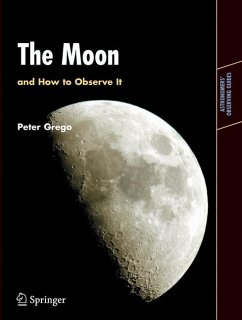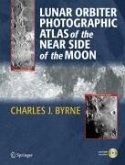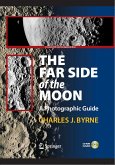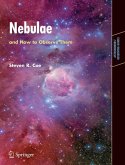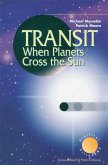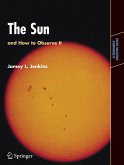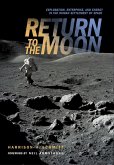The Moon is the most commonly observed of all astronomical objects. Here, Peter Grego provides a concise, readable description of the latest ideas about its origin, history and geology.
This is followed by a detailed guide for amateur astronomers who want to observe the Moon. It deals with equipment and techniques for a wide range of instruments - including the unaided eye - and features many practical hints and tips for practical astronomers.
In one book, here is all you need to observe the Moon with an understanding of just what it is you are looking at.
Dieser Download kann aus rechtlichen Gründen nur mit Rechnungsadresse in A, B, BG, CY, CZ, D, DK, EW, E, FIN, F, GR, HR, H, IRL, I, LT, L, LR, M, NL, PL, P, R, S, SLO, SK ausgeliefert werden.
"Books on the Moon tend to be either photographic or cartographic collections, observing guides or text books ... . This book conveniently provides elements of all three ... . Production quality is very good, with high quality semi-gloss paper, 134 figures, many in colour. ... These are followed with a glossary, a list of resources including organisations, internet resources and bibliography ... . If you are looking for a lunar guide with some nice clear maps ... you would be hard pressed to find better." (Roger Feasey, Journal of Auckland Astronomical, July, 2005)
"Grego provides a refreshingly clear explanation of how the Moon's surface and interior reached their present state ... . The section comparing the Earth's moon to the moons of the other planets in the Solar System is particularly interesting, leaving the reader with many easily remembered facts ... . The book was obviously produced with great care. ... this thoroughly up-to-date book may prove to be well suited for the intermediate amateur astronomer seeking more specialized knowledge of a timely subject." (Brian Chapel, The Observatory, Vol. 126 (1193), 2006)
"The Moon and How to Observe It is the latest of Springer-Verlag's Astronomers' Observing Guides. Described as 'an advanced handbook for students of the Moon', it is in fact suitable for amateur astronomers of all levels, beginner as well as advanced. ... The book is illustrated by about 100 photographs and drawings, many of them by Grego himself. ... a detailed and up-to-date guide, ideal for the amateur astronomer who wishes to observe the Moon or simply learn more about it." (Brendan K Ward, Astronomy and Space, June, 2006)
"Refreshingly, Peter Grego's book explores every aspect of the Moon ... . It also includes recent theories on the possibilities of the existence of lunar ice in deep polar craters. ... Outline drawings, photographs and descriptions illustrate the lunar surface ... . This publication would be a good addition to the library of anyone interested in the Moon." (Alan Wells, BBC SkyatNight, February, 2006)
"The current crop range from scholarly discourses on lunar geology to popular tours of lunar features. Grego has attempted to include all of this and more in his book ... . Grego does an excellent job of describing the wide range of features that are visible in moderate telescopes and he includes several interesting projects that will encourage beginners. ... this discussion of the visual treats available to naked eye, binocular and telescopic workers is very valuable. ... I would recommend this book ... ." (Nick James, Journal of the British Astronomical Association, Vol. 116 (2), 2006)

